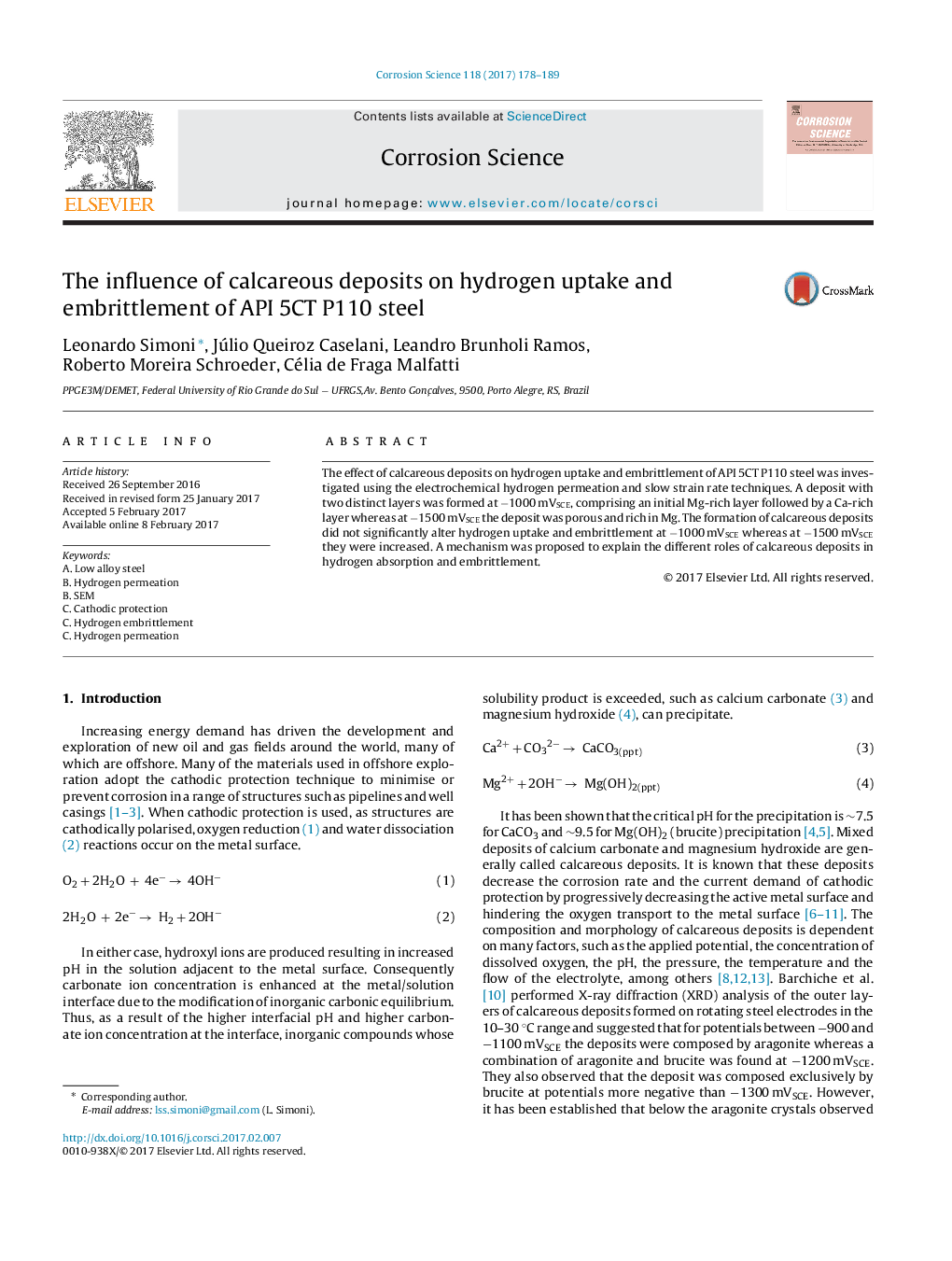| Article ID | Journal | Published Year | Pages | File Type |
|---|---|---|---|---|
| 5440184 | Corrosion Science | 2017 | 12 Pages |
Abstract
The effect of calcareous deposits on hydrogen uptake and embrittlement of API 5CT P110 steel was investigated using the electrochemical hydrogen permeation and slow strain rate techniques. A deposit with two distinct layers was formed at â1000Â mVSCE, comprising an initial Mg-rich layer followed by a Ca-rich layer whereas at â1500Â mVSCE the deposit was porous and rich in Mg. The formation of calcareous deposits did not significantly alter hydrogen uptake and embrittlement at â1000Â mVSCE whereas at â1500Â mVSCE they were increased. A mechanism was proposed to explain the different roles of calcareous deposits in hydrogen absorption and embrittlement.
Keywords
Related Topics
Physical Sciences and Engineering
Materials Science
Ceramics and Composites
Authors
Leonardo Simoni, Júlio Queiroz Caselani, Leandro Brunholi Ramos, Roberto Moreira Schroeder, Célia de Fraga Malfatti,
